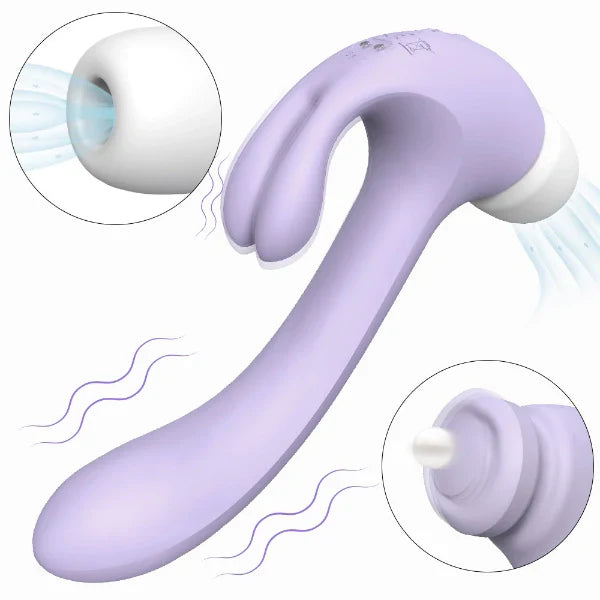Mutual Masturbation means two partners stimulating themselves or each other at the same time. It’s sex—just without penetration—and it can be intimate, safe, and surprisingly satisfying for many couples.
What Is Mutual Masturbation?
WebMD defines mutual masturbation as partners stimulating themselves or each other with hands or toys in the same setting; this can occur face-to-face, side-by-side, or remotely via video.
Mutual masturbation means partners use hands or toys to create sexual pleasure together. It can involve two people or a small group. Like any other kind of sexual play, it’s a way to share stimulation and enjoy each other’s bodies. Some people also call it “mutual pleasuring.”
Mutual masturbation. Orgasm isn’t required. You can treat it as foreplay before oral or penetrative sex, or enjoy it as its own intimate experience.
One common approach is touching a partner’s genitals with hands or fingers, with or without penetration. If both of you feel comfortable, toys—such as vibrators—can join the mix. If you want to add a toy, a simple sextoy can help focus on sensation without adding complexity.
Another option is parallel play: each person touches themselves while the other watches. You might talk, guide each other’s pace, or view erotic material together. That shared focus often feels deeply connected and satisfying.

Why Masturbate When You Can Just Have Sex?
“Why not go straight to penetration?” Because bodies, comfort, time, and health all vary—and options help. Treat Mutual Masturbation as another menu item, not a consolation prize.
No exchange of bodily fluids through penetration means dramatically lower HIV risk; IAPAC most authorities list masturbation (solo or mutual) as safe regarding HIV. Barrier use still helps reduce STI risk from skin-to-skin infections.
People use masturbation to learn what they like, then communicate it to partners—skills that boost partnered pleasure later. On nights when penetration feels like “too much,” Mutual Masturbation keeps intimacy alive without overexertion.
It fits many bodies, orientations, and abilities—useful after childbirth, surgery, or when adjusting meds.
Some men prefer focused tools, such as male masturbators, to understand pressure and rhythm before sharing with a partner.
How to Mutually Masturbate
Think “set the scene → warm up → explore → check in → land the plane.” Keep each step bite-sized. You’re building a shared rhythm, not running a marathon.
Step-by-step, you can try tonight: Agree on boundaries and a safe word or pause word. Consent is ongoing; either person can stop at any time.
Keep words simple: “yellow” for slow down, “red” for stop. National groups emphasize that consent isn’t a one-time checkmark.
Set up comfort. Dim lights, towels, water, and body-safe lube. Sit side-by-side to see each other’s pace.
Start with yourself. Each person begins on their own, so the other can mirror breathing and tempo.
Add hands. When invited, place a hand over theirs or on them. Match pressure; follow their cues.
Layer sensations. Temperature play (warm towel), textures (soft blanket), and toys one at a time. Start small—like a compact g-spot vibrator for vulva owners, or a stroker for penis owners.
Check in mid-way. Ask, “More of this? Less? Different angle?” Tiny adjustments matter.
Close with care. After climax—or not—pause for cuddles, water, and a quick debrief: “What felt best?”
If clitoral stimulation is central to one partner, a palm-sized clit vibrator keeps the rhythm steady while the other focuses on eye contact or dirty talk.

How to Ask Your Partner for Mutual Masturbation
Even confident couples stall here. A simple, direct ask beats a long preamble. Pick a low-pressure moment (walking after dinner, cuddling, or texting during the day) and frame it as shared curiosity.
Use one of these short scripts:
“I’d like to try Mutual Masturbation together. It’s lower pressure than sex, and I think it would be fun to explore what we like—interested tonight?”
“I want to learn your exact pace and pressure. Could we do Mutual Masturbation and narrate for each other?”
“Penetration isn’t my speed tonight, but I still want intimacy. Mutual Masturbation?”
If your partner prefers hands-free assistance, introduce just one item—say, a quiet dildo with a flared base for grind-style stimulation—so, so conversation stays easy.
FAQs
Can You Get Hiv from Mutual Masturbation?
Mutual Masturbation by itself is considered safe regarding HIV transmission because it typically involves no exchange of blood, semen, vaginal fluids, or rectal fluids inside another person’s body. Avoid sharing broken-skin contact with fluids, and use barriers if touching genitals after contact with fluids.
Does Lube Matter?
Yes. Use body-safe, fragrance-free lube to reduce friction and micro-tears. Avoid spermicides like nonoxynol-9 for STI prevention; they don’t help and can irritate tissues.
Is Mutual Masturbation “less Intimate”?
Many couples report the opposite. Eye contact, guided narration, and mutual pacing can feel more intimate than routine intercourse. U.S. survey work shows masturbation commonly coexists with partnered sex.
How Often Do Americans Do This?
In recent U.S. research, masturbation—solo or with a partner—is common across ages; frequency varies by life stage and stress levels. Use it as a flexible intimacy tool, not a quota.gg
For toy fans who want pinpoint external stimulation without penetration, a petal-shaped rose toy can keep things playful.



